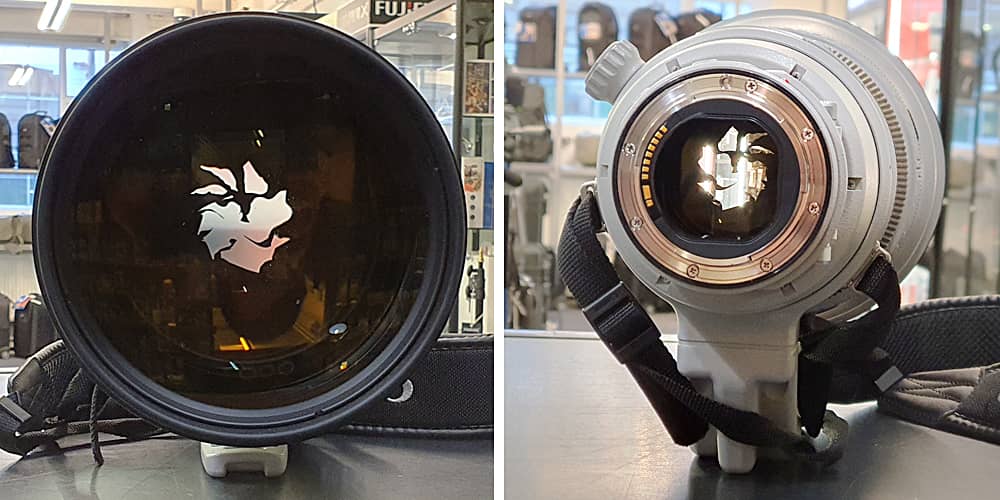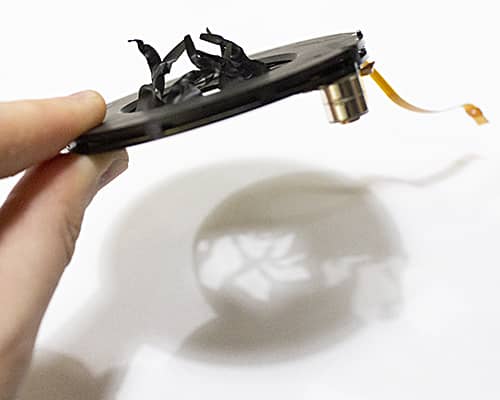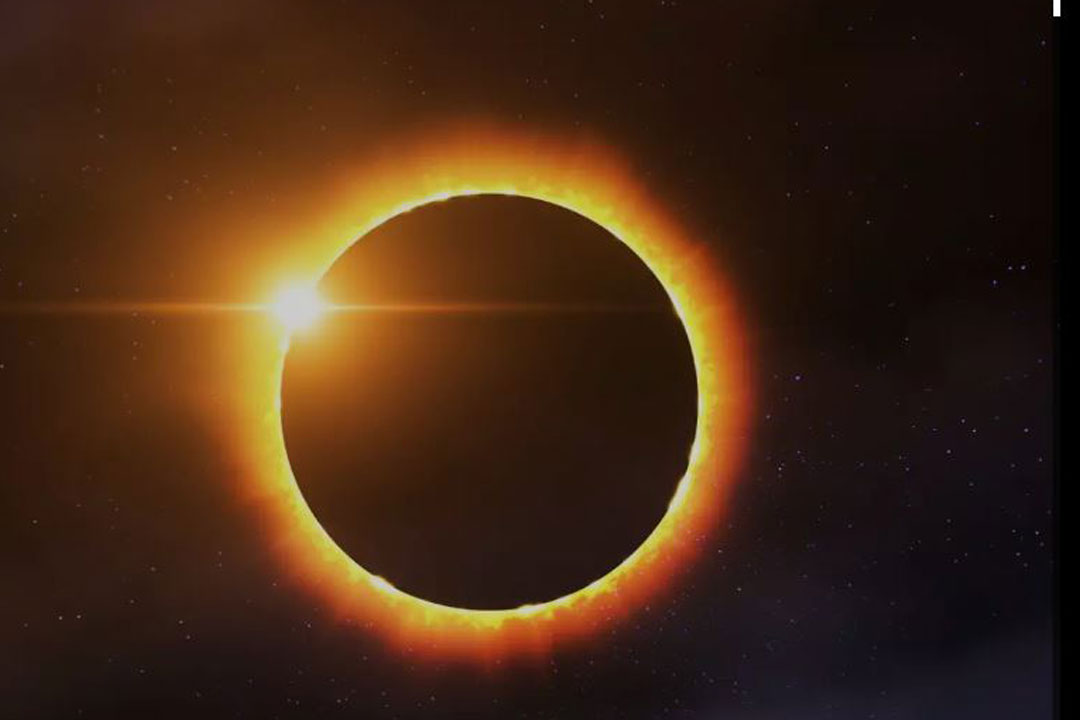A solar eclipse is definitely a photo-worthy event but, just like looking into the sun, pointing your camera at the sun can have damaging consequences.
After a partial eclipse we received a Canon EF 400mm f2.8 L II IS lens with an Error 01. On closer inspection the aperture blades were bent and twisted. We have treated sun-damaged cameras in the past but this time the lens was damaged. We called the photographer to find out what had happened.

To protect their eyes the photographer had decided to use Live-View to get the sun in frame and wait for the right moment for the exposure. To cut the amount of light reaching the CMOS imaging sensor the lens was stopped right down to f/22.
In live view shooting the aperture stops down as you change the setting, so when f/22 is set the aperture blades close and stay closed while you view the image on the rear monitor.
The lens was pointing at the sun for approximately 2 minutes with the aperture stopped down and absorbing most of the light. This was enough to heat and warp the thin aperture blades in a way that we had never seen before in our workshop.

Luckily it was the aperture mechanism alone that was damaged and our technicians were able to replace that with a new part from Canon for under £300. The lens is otherwise in full working order however this repair could have been avoided.
How to photograph the sun
First we must stress that you should never look directly at the sun through lenses, cameras or optics. Doing so could cause permanent damage to your eyes. Even the filters below are for photographing the sun and are designed to protect electronic equipment, not eyes.
Tip 1: Use a solar-filter
Lenses with filter threads: Use a Lee or screw-in solar filter. Unlike ND filters, specially made solar filters block UV and Infra-red light as well as the visible spectrum. This protects your lens and camera from a much wider range the radiation that could otherwise damage your lens and sensor.
Telephoto lenses: use Solar Foil. Large aperture telephoto lenses like the 400mm above do not have filter threads at the front of the lens. Solar foil comes in A4 sheets which can be fitted over the front element or lens-hood of a super-telephoto lens.
Tip 2: Keep your lens covered
Once your image is composed, use a lens cap to stop all light entering your lens until you are ready to shoot. This keeps your lens and camera cool and able to function better when it comes to making the exposure.
If you have any questions about shooting difficult subjects or in unusual environments we have decades of experience supporting photographers working around the world and are happy to help.


Looks more like the result of a ‘Loony Eclipse!’
And just think of the damage your eyes will suffer if you looked at the eclipse without protection…amazing story